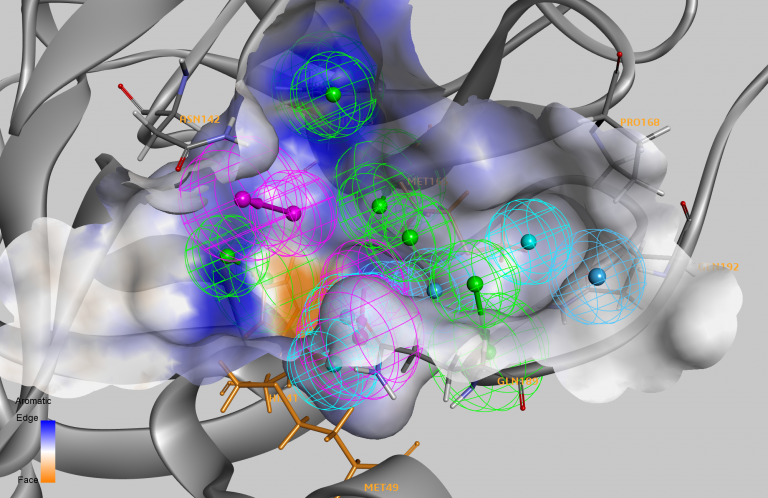Introduction
In drug design, pharmacophore is a critical concept that serves as the foundation for discovering and developing new drugs. It refers to the set of chemical and steric features that enables a drug molecule to interact with its target, such as a protein or an enzyme. Decoding pharmacophore is crucial to understanding the underlying mechanisms of drug action and designing drugs that are potent, selective, and safe. In this blog, we will explore the significance of pharmacophore and its role in drug discovery.
What is Pharmacophore?
Pharmacophore is a three-dimensional arrangement of atoms and functional groups that represents the essential features required for a compound to bind to its target and exert a biological effect. A pharmacophore model is constructed based on structural and functional information of the target and its ligands, including hydrogen bonding, electrostatic interactions, and hydrophobic interactions.
Pharmacophore in Drug Design
Pharmacophore serves as a crucial element in drug design by guiding the selection and optimization of lead compounds. An ideal drug must exhibit a high affinity towards its target, possess good pharmacokinetic properties, and exhibit minimal toxicity. Pharmacophore-based drug design offers several advantages over traditional random screening approaches and can speed up the drug discovery process.
Applications of Pharmacophore in Drug Discovery
Pharmacophore-based drug discovery has led to the identification of several successful drugs, including HIV protease inhibitors, beta-blockers, and calcium channel blockers. Here are some of the applications of pharmacophore in drug discovery:
Lead Identification: Pharmacophore-based virtual screening enables the identification of potential lead compounds from large chemical databases. The computational approach reduces the time and cost associated with the screening process.
Lead Optimization: Once a lead compound has been identified, pharmacophore models can guide the modification of the compound’s structure to improve its affinity and selectivity towards the target. The optimization process involves designing analogs that maintain or enhance the essential features of the pharmacophore model.
Off-Target Prediction: Pharmacophore-based off-target prediction saves time and resources, helping to avoid safety issues during preclinical and clinical stages. It predicts the possible side effects of a compound by identifying similar structures to the pharmacophore model and assessing their activity towards other targets.
Fragment-Based Drug Design: Fragment-based drug design relies on identifying small molecule fragments that bind to specific parts of the target protein and then designing larger molecules by linking these fragments together. A pharmacophore model can guide the selection of suitable fragments and assist in linking them to ensure the final molecule fits the pharmacophore model.
Limitations and Future Directions
Despite its tremendous potential in drug discovery, pharmacophore-based drug design also has several limitations. The success of the approach is highly dependent on the quality of the pharmacophore model, which can be challenging to derive sometimes. Additionally, the method does not account for protein flexibility and can thus miss some important interactions between the target and the ligand.
In the future, advances in computational power and machine learning techniques may address some of the challenges associated with pharmacophore-based drug design. Researchers will continue to explore and refine the concept of pharmacophore, leading to new opportunities for discovering and designing more effective and safe drugs.
Conclusion
Pharmacophore is a vital concept in drug design, essential for understanding drug-target interactions and designing potent and selective drugs. The computational approach enables drug discovery through lead identification, optimization, target prediction, and fragment-based drug design. Although pharmacophore-based drug design has some limitations, the approach holds tremendous potential for accelerating the drug discovery process and producing more effective and safe drugs in the future.




